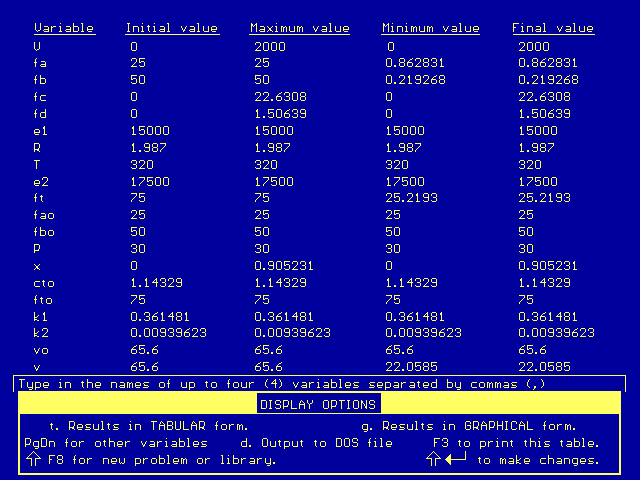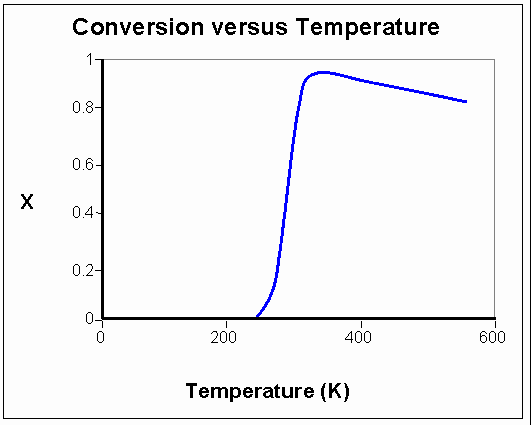![]()
|
|
Type 6 Home Problem -- Solution
Problems, or parts of problems, that are open-ended.
We will use Polymath's simultaneous differential equation solver to handle this problem.
Our first step to solve this multiple reaction problem is write our mole balances:

Next, we prepare our rate constant equations:
![]()
and
![]()
From stoichiometry:

and
FT=FA+FB+FC+FD
Knowing that CTo = P/RT,
 , and
, and
 , we can
then set up our Polymath solution:
, we can
then set up our Polymath solution:

Before we begin solving our simultaneous differential equations, we need to convert the desired product flow rate into units, to which we can relate:

which in terms of conversion is:

Now, we must perform trial and error calculations with different temperatures (T) and pressures (P). Our dilemma is that we need to achieve the 90% conversion to the product (C) within the volume limitations of our PFR. We need a temperature and a pressure that will produce 22.5 mol/sec of C in 2 m3, but that won't convert product (C) to product (D).
We found that at 320 K and 25 atm, our PFR exceeds the requirements. Our flow rate of product is 23.1 mol/sec. That translates into a conversion of 92.3%. An example of the results can be seen in the Polymath output below:

It is easier to establish our optimal conditions if we can see the effect of temperature on conversion (see the Conversion versus Temperature graph, below). At a constant pressure of 25 atm, we can see that our conversion reaches a maximum at a temperature of about 320 K. If we increase the temperature beyond 320 K, the rate of our unwanted reaction increases, and we see a drop in conversion.

Although the conversion approaches its limit at 25 atm, an increase in pressure will have a positive effect on the conversion of this system:

However, exceeding 30 atm in pressure would not be advantageous, because the gains in production are not worth the higher expenditures (in capital investment and in operating costs) that would be associated with those operating pressures. Equipment for high pressure applications is much more expensive, the feed would need to be pressurized, etc., and as you'll see in the real world, a project's budget must be economical, or else the project will never get off the ground.
![]() Back to Homogeneous Example 6
Back to Homogeneous Example 6
CRE Thoughts Ten Types Homogeneous Example 6